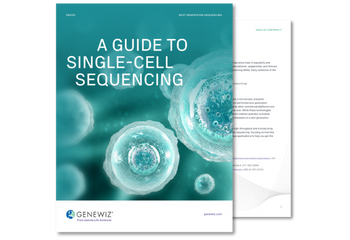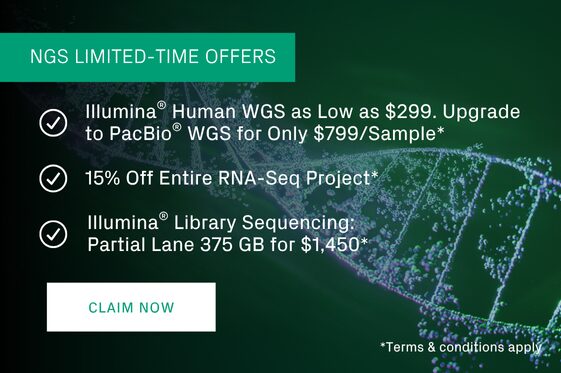NGS Solutions for Virtually Any Project
Data Delivered How and When You Need It
Next Generation Sequencing (NGS)
Next generation sequencing (NGS) is a revolutionary technology that simultaneously adds nucleotides while copying a DNA strand. This process generates a signal corresponding to the nucleotide type and position of the growing DNA strand, enabling efficient DNA sequencing.
Our next generation sequencing services include standard and custom options for extraction, library preparation, sequencing, and bioinformatics. All our NGS services are performed at our state-of-the-art laboratory in New Jersey using the latest NGS technologies, including the Illumina® NovaSeqTM X series, PacBio® Revio™ and Oxford Nanopore Technologies® PromethION™ /GridION™ platforms, to ensure you receive the highest quality data. Our Ph.D.-level scientists provide free consultations, real-time updates, and post-delivery assistance — supporting you throughout each step of your project.
As fellow scientists and genomics leaders, we continuously optimize our processes to deliver the best results that meet your budget and deadline. Whether it’s your first NGS project or your hundredth, we are committed to helping you find the next generation sequencing service that aligns with your research needs.
Find the right NGS solution with our interactive tool
Next Generation Sequencing Services
-
RNA-Seq
-
Single-Cell Sequencing
-
Illumina Sequencing
-
Whole Genome Sequencing
-
Exome Sequencing
-
Targeted Sequencing
-
Amplicon Sequencing
-
CRISPR Validation
-
Spatial Transcriptomics
-
Epigenomics
-
Immunogenomics
-
Metagenomics Solutions
-
AAV Genome Sequencing
-
Whole Plasmid Sequencing: Plasmid-EZ
-
Antibody Discovery
-
Proteomics
-
Long-Read PCR Product Sequencing: PCR-EZ
-
High-Throughput Gene Expression
A Guide to
Single-Cell Sequencing
The ultimate resource for optimizing your single-cell project

Next Generation Sequencing Features & Benefits
-
Complete sample-to-analysis solutions including customizable extraction and data analysis options available
-
Superior data quality that exceeds manufacturer’s benchmarks
-
In-house pipeline for optional Sanger-based confirmatory sequencing of final targets utilizing your NGS samples
-
Dedicated support from Ph.D.-level project managers plus real-time project updates so you’re never in the dark
-
Flexible service packages to meet your budget and deadline
-
Automated workflows to increase scalability and improve reproducibility
Next Generation Sequencing Workflow
Extensive Quality Control is Performed at the Conclusion of Each Step of the Process
Use Tab to focus a step, then press Enter or Space to select it. Use Left and Right arrow keys to move between steps.
Experimental Design
Technical Resources
NGS Platforms
For information on our NGS platforms as well as recommended configurations of your projects, please visit the NGS Platforms page. GENEWIZ does not guarantee data output or quality for sequencing-only projects.





